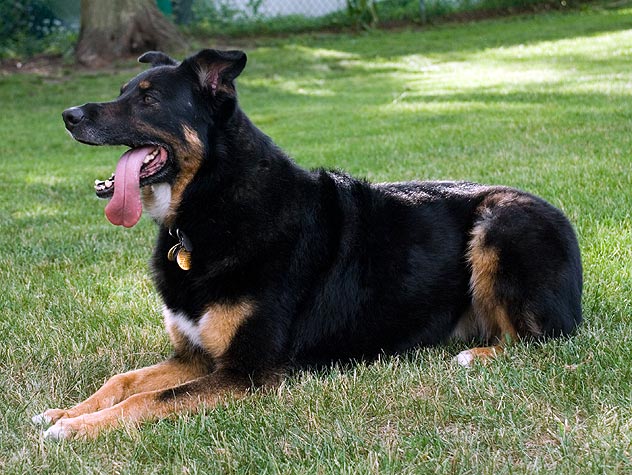Maremma Sheepdog
The Maremma Sheepdog is a farm dog at heart, bred to protect livestock. They do best today as working dogs but can make loyal and trustworthy companions. The Maremma breed is large, strong, and looks like a polar bear with a long, harsh, white- or cream-colored coat that blends in with the sheep they were originally bred to protect.
Breed characteristics carousel
Learn More
Need to Know
- Dogs suitable for experienced owners
- Extra training required
- Need to be aware of potential health issues
- Enjoys long, gentle walks
- Giant dog
- Some drool
- Requires frequent
- Quiet dog
- Barks, alerts, and may be physically protective/suspicious of visitors
- Might not like other dogs
- May need additional training to live with other pets
- May need additional supervision to live with children
- Needs a large garden, preferably in rural areas
- Can be left alone with training

Personality
Trustworthy, hard-working, and attentive, these Italian sheepdogs are dedicated to protecting their flocks and families. They love having a job to do and do better as working dogs rather than pets, although they are loyal to their families, especially their masters. Maremma Sheepdogs can be weary of visitors. They thrive in rural settings.
The Maremma Sheepdog breed was originally bred to protect flocks of sheep from predators such as bears and wolves, some 2,000 years ago. From the same ancient dog breed as the Hungarian Kuvasz and the French Pyrenean Sheepdog, the Italian Maremma was brought together as one breed in the 1950s under the name Cane da Pastore Maremmano-Abruzzese, or Maremma Sheepdog for short. They were displayed at the London Zoo in the 1820s as the Italian Wolf Dog and Queen Victoria owned a pair herself. They came to America in the early 20th century.
If you live remotely with few visitors, the Maremma Sheepdog might be an ideal fit for you. They don’t love the idea of visitors—they were bred to be watchdogs—and they enjoy roaming around large pieces of land, protecting their families and animals.
Quiet, steady exercise patrolling vast fields is the name of the game for tuckering out a Maremma. They are vigilant watchdogs and enjoy the work. They need off-leash exercise, but because they can be so suspicious of strangers, it’s best to do this on remote land and not at a dog park.
This is a very large dog, and with it comes large everything; space indoors and out, beds, food bowls, and more. They will need a good amount of space to call their own inside, and if you bathe your Maremma Sheepdog at home, it’s a good idea to have a large dedicated space for drying. A fenced-in yard, ideally on a farm, is best. The Maremma breed does best in remote rural living.
The Maremma Sheepdog has a heavy and dense coat that requires a lot of grooming. Brushing should happen regularly to prevent matting, eczema, and hot spots.
Motivation will be more difficult with a Maremma Sheepdog than other breeds, as they are independent thinkers bred to have autonomy over their actions. Socialization and recall are vital to the breed, and positive reinforcement is the best method to get them to learn obedience. They won’t respond well to harsh methods.
The Maremma dog is a loyal and loving dog, but they can be vocal about their dislike of strangers. This might be difficult in a home with children who are social and bring friends home. Plus, the size, exercise, and training needs of this dog might not make it an ideal fit for a family with small children or elderly members.
The cost of a Maremma Sheepdog from a breeder is significantly more than the cost of adopting one from a local shelter or rescue. The adoption fee usually covers additional items such as spaying or neutering, vaccines, and microchipping.

Learn more about feeding and caring for your Maremma Sheepdog on Purina.
Did You Know?
- Improbably, three Maremma Sheepdogs found themselves protecting penguins from predators. The dogs lived with the penguin colony on Middle Island off the Australian coast and protected the penguins from being attacked by foxes.

